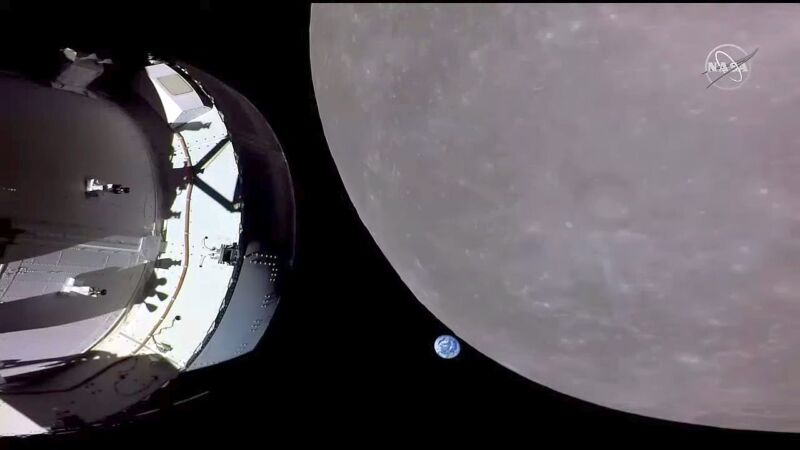
Enlarge / This image taken by NASA’s Orion spacecraft shows its view just before the vehicle flew behind the Moon in 2022.
NASA
Although NASA is unlikely to speak about it publicly any time soon, the space agency is privately considering modifications to its Artemis plan to land astronauts on the surface of the Moon later this decade.
Multiple sources have confirmed that NASA is studying alternatives to the planned Artemis III landing of two astronauts on the Moon, nominally scheduled for September 2026, due to concerns about hardware readiness and mission complexity.
Under one of the options, astronauts would launch into low-Earth orbit inside an Orion spacecraft and rendezvous there with a Starship vehicle, separately launched by SpaceX. During this mission, similar to Apollo 9, a precursor to the Apollo 11 lunar landing, the crew would validate the ability of Orion and Starship to dock and test habitability inside Starship. The crew would then return to Earth. In another option NASA is considering, a crew would launch in Orion and fly to a small space station near the Moon, the Lunar Gateway, and then return to Earth.
To discuss these options, Ars asked for an interview with Catherine Koerner, a deputy associate administrator who oversees Exploration Systems Development for NASA. Instead, the space agency offered a noncommittal statement.
“NASA continues to work toward the Artemis II crewed test flight in September of 2025 and the Artemis III test flight to land astronauts near the lunar South Pole in September of 2026,” the statement read. “The agency evaluates element progress and status on a daily basis and uses that data to make decisions at the right time for each mission as a part of prudent programmatic and mission management. Should a particular hardware element not be available to support a mission as scheduled or planned, NASA will evaluate the readiness of available hardware for options to make those decisions with crew safety as the number one priority.”
An unrealistic timeline
The space agency’s date for Artemis II is optimistic but potentially feasible if NASA can resolve the Orion spacecraft’s heat shield issues. A lunar landing in September 2026, however, seems completely unrealistic. The biggest stumbling blocks for Artemis III are the lack of a lander, which SpaceX is developing through its Starship program, and spacesuits for forays onto the lunar surface by Axiom Space. It is not clear when the lander or the suits, which NASA only began funding in the last two to three years, will be ready.
There are also concerns about the complexity of Artemis III. It will require a number of previously untested steps, including an Orion-Starship rendezvous and docking in lunar orbit; humans flying inside of Starship in space; Starship going down to the surface and coming back up to dock with Orion; and more. Mission planners would be more comfortable if they could, in NASA parlance, “buy down the risk” of Artemis III by validating some of these delicate maneuvers before the lunar landing mission.
This is why NASA has asked SpaceX to look at a mission where Orion would rendezvous with the Starship vehicle in orbit around Earth. Such a mission—whether called Artemis IIS or Artemis III—would solve a lot of problems for the space agency and appears to be the preferred option at this time. Critically, it would verify the ability of the two spacecraft to dock in an environment where, if there were a problem, it would be much easier for the crew to return safely home. It would also validate the ability of astronauts to live inside Starship and perform some ascent and descent maneuvers.